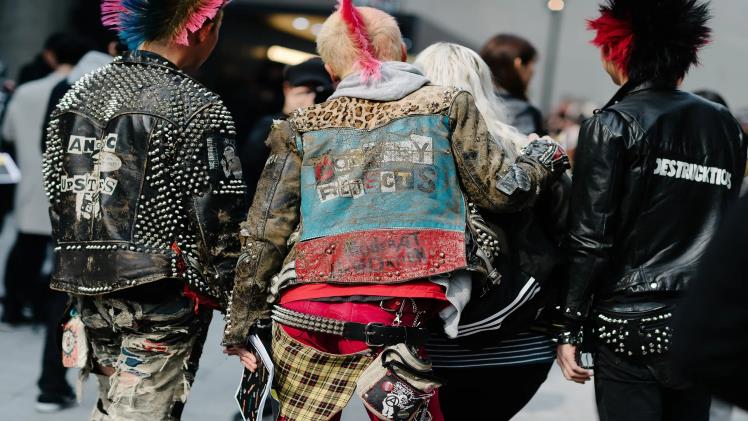Punk Fashion

Punk fashion is an expression of rebellion against social norms, drawing inspiration from the 1970s when punk rock began to gain popularity.
Vivienne Westwood and her husband Malcolm McLaren are widely credited as being a major influence on punk style. Utilizing ripped T-shirts, provocative imagery and provocative designs, they created an aesthetic which has since been emulated by modern bands.
Band T-shirts were a popular choice among punk bands as they symbolized belonging and unity within the scene. Notable examples include Black Flag, The Ramones and other early punk acts who often donned these tees during concerts and photoshoots.
Glam Punk – Glam punk style is known for its vibrant colors and unique costumes. Band hoodies, satin shirts and drainpipe jeans were popular choices among these trendy rockers.
Hardcore Punk – Opposite of Glam Punk, this style features dark T-shirts with baggy jeans, band tees and sneakers for an androgynous aesthetic.
Deathrock (Gutter punk) incorporates horror and gothic aesthetics into punk music. Its signature features include shaved heads, asymmetrical cuts and disfigured body parts – giving the genre a broader definition than skinheads to encompass both male and female punks alike.
Punk rock’s early fashion featured heavily distressed and torn clothing as a reaction against the soft lines and waves popular during the late sixties. This counter-movement served as an outlet for those dissatisfied with neoromanticism at that time.
At this time, the UK was gripped in turmoil and conflict, with commercial strikes, street wars and police violence at an all-time high. Many young people felt angry, frustrated and disenfranchised at this point in history.
To know more different types of news like – Erratichour, Dramasto, Homedesign, Healthyfood, Fotolog, Casinoplay, Healthydiett, Weddingmedia
Punks took on an anti-brand and anti-capitalism attitude in response to this. They developed DIY skills while creatively reinterpreting societal standards for fashion, beauty and sexuality. Ripping clothes, using safety pins to sew on chains or wearing leather represented their rejection of society’s expectations for them in regards to gender roles and beauty standards.
They also attested to the deformation of women’s images through tattoos and piercings, which often depicted them in sexually suggestive or dangerous scenarios. Furthermore, many tattoos dealt with themes related to race identity and violence.
Women in punk music were vocal about how society’s standards affected their physical appearance and femininity by “uglyfying” themselves through unnatural dyes, hairstyles, cuts, and tattoos. Furthermore, they demonstrated their own power by wearing ripped clothing and altering their bodies through surgical techniques that sought to physically separate from pre-formed femininity.
The counter-movement also adopted a more minimal style of music. Bands like The Ramones transformed classic rock songs into sharp two-minute bursts that have become synonymous with teenage rebellion.
As the neo-punk movement gained steam, it became increasingly fashionable to dress like punks. Monse saw models dressed in tartan plaid and fishnet stockings strutting down the runway wearing R13 chunky moto boots; Dries Van Noten featured models sporting mismatched plaid and unnatural hair colors as a nod to punk’s origins; Coach even had Debbie Harry perform as part of their closing show!

